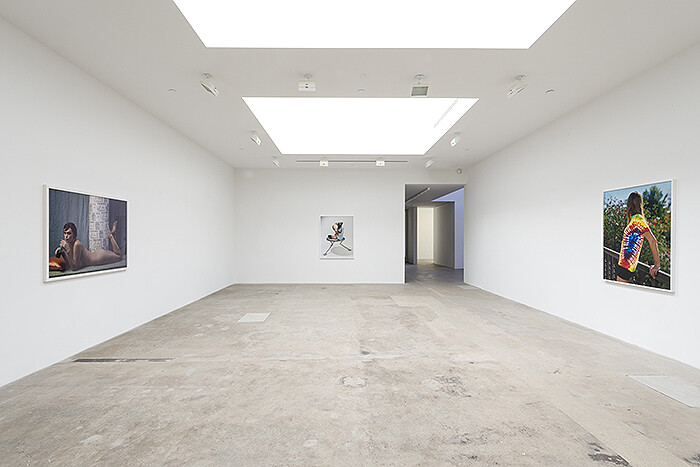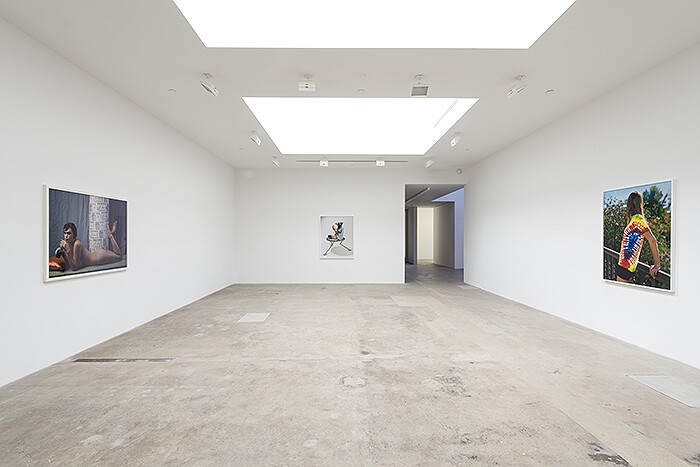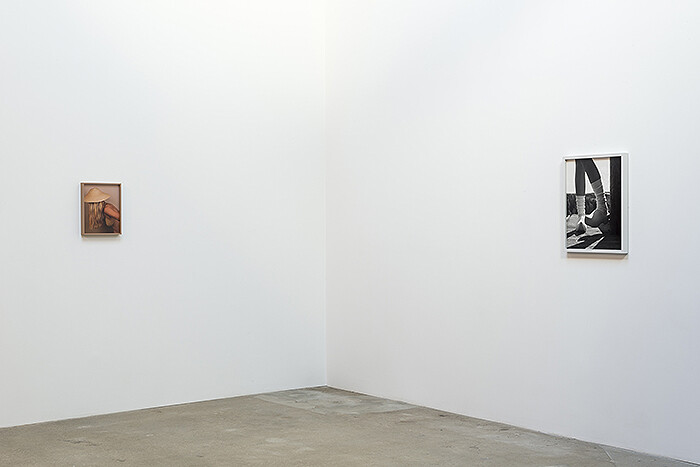Riding one of the many waves that have made their way across the country from New York over the past five years, Hannah Hoffman, a new gallerist in Hollywood, has opened up her space at the intersection of Highland Avenue and Santa Monica Boulevard, just around the corner from the new Regen Projects space and the upstart Redling Fine Art. To date, Hoffman has showcased the work of several other recent transplants and interlocutors from the East Coast. This includes a recent four-person exhibition with Jacob Kassay, Sam Falls, Matt Sheridan Smith, and Joe Zorrilla, and now, a group show curated by UCLA-educated, New York-based sculptor Frank Benson. This photography exhibition describes itself as a “selection of images,” subtly urging viewers to encounter these works not as manifestations of the photographic medium, but simply as images—that is, like pictures unencumbered by their physical actuality or by the art world’s interpretive conventions. A couple of the participating artists, like Wolfgang Tillmans and Roe Ethridge, have at some point juggled careers as commercial photographers alongside their fine art practices. Mining a territory that exists not in the interstices of art and commerce, but as an overlap between the two contexts, their images have become synonymous with the blurring of distinctions between these approaches to the medium, carrying out parallel lives for different audiences. The show’s title, “The Body Issue,” hints at a parallel ambiguity, and could refer to the matter of figuration in photography, or to a special issue of a magazine devoted to the body. In this sense, the entire presentation becomes a show-as-magazine or gallery-as-publication, guest edited by Benson. This is a welcome and undidactic way of alluding to the exhibition as “something else.” Instead of being bent around awkward conceits, the images are free to speak for themselves, articulating a collective position that stands as a style-driven movement in art and a broader trend in visual culture. And yet, as noted by the gallery, a rubric guiding Benson’s selection of photographs does exist: they are each shot “using a similar sharply focused style” and focus on a single human subject; additionally, the nine artists in the show, which also includes Benson, have each contributed a single work. The exhibition is designed to cause slippage between one artist’s production and another’s. I initially mistook Torbjørn Rødland’s black-and-white, benign fetish study of lithe legs captured in late afternoon light, White Socks and Clogs (2004–10), as an Elad Lassry. Blond Girl 2 (2010), Lassry’s actual piece on a wall nearby, is a quasi-monochromatic shot of a girl leaning forward in a tan bra; set against a beige background that matches a beige frame, her profile is occluded by her long blond hair and a straw hat. Matthew Spiegelman’s portrait, Fourth Dimension (2007), captures another anonymous girl, whose face is shielded by golden tresses as she gazes from a porch at a flowering bush. Even the superficial similarities between the Talia Chetrit’s Crotch (2012) and Tillmans’s Karl, Utoquai 22 (2012) could confuse Google. Each is a landscape told through the contours of Caucasian flesh, forested by hair of the female pubic and male armpit varieties, respectively. Blunt similarity does not generally make for a pitch-perfect curatorial framework, but in the service of transparency, it certainly could. For better or worse, the works of several of these artists are frequently brought together in group shows, and here, that tendency is sensationalized. It’s the über-show for crisp, conceptually oblique portraiture. Rather than an idea per se, it presents a style, unattached to discursive agendas or postulation about how the aesthetic zeitgeist reflects life outside its own vacuum. In effect, it turns the insider feel of a group show full of expected names and correspondences on its head; one’s familiarity with each artist’s respective approach should only encourage us to take a deeper look. Perusing the gallery thus becomes a recursive exercise, much like leafing through a magazine, and as the eye adjusts, the glosses that bind these images together take on idiosyncratic glints.











